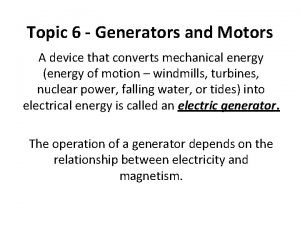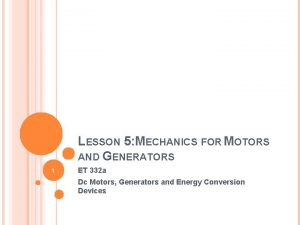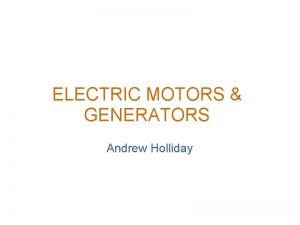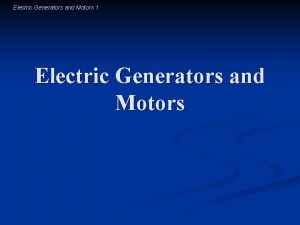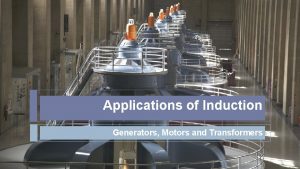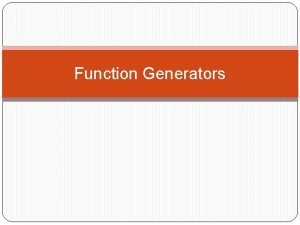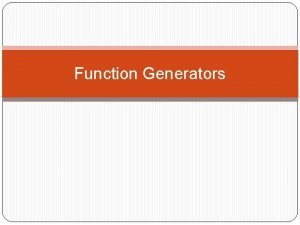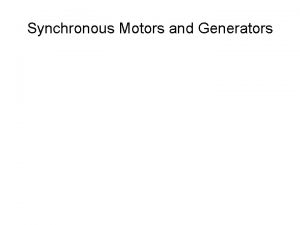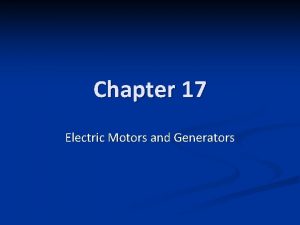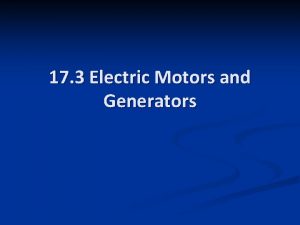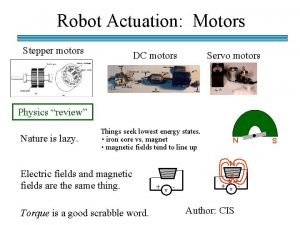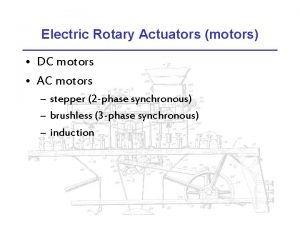Topic 6 Generators and Motors A device that











- Slides: 11

Topic 6 - Generators and Motors A device that converts mechanical energy (energy of motion – windmills, turbines, nuclear power, falling water, or tides) into electrical energy is called an electric generator. The operation of a generator depends on the relationship between electricity and magnetism.

Electricity to Magnetism • Oersted found that current creates a magnetic field around a wire. • The amount of needle deflection depended on how much electric current was flowing in the wire. • When the current was reversed, the needle moved in the opposite direction. • Demo

Electromagnets • When a soft iron core is inserted into a coil of wire and a current is passed through the wire, a very strong “temporary” magnet is produced, called an electromagnet • When the current is shut off, the electromagnet loses its power.

• The strength of an electromagnet is affected by the … A. type and size of core B. strength of current C. number of coils http: //www. youtube. com/watch? v=emlzh 9 XXW g. Q

Magnetism to Electricity • Faraday discovered electromagnetic induction in 1831. He demonstrated that moving a conducting wire back and forth through a magnetic field generated a current. • Faraday created the first electricity-producing generator, which could generate electrical current. • He also found that moving the magnet worked as well. • Demo

What’s in a Generator? • An AC generator – the most common type – has a coil of wire rotating inside a stationary field magnet. • The electricity produced by this type of generator is called alternating current because it changes direction (in N. America it changes direction 120 times per second)

DC Generators • A DC generator is much the same as a DC motor, and is often called a dynamo. • The DC generator’s pulsating electricity is produced in one direction - referred to as direct current

The St. Louis Motor. • • • Label the parts of the St. Louis Motor. Armature Brushes Split Ring Commutator Permanent Magnet Electrodes

How the St. Louis Works!! • Electrodes are connected to the power source • Brushes connect the electrodes to the split ring commutator • Split ring commutator allows an interruption in the current and reverses the poles of the electromagnet.

• Electrodes are connected to the power source • Brushes connect the electrodes to the split ring commutator • Split ring commutator allows an interruption in the current and reverses the poles of the electromagnet.

Electric Motors: Electric to Mechanical Energy • Generators and Motors are built exactly the same. They work in reverse of one another. • Generators move or use mechanical energy to produce an electric current. • Motors use the electric current to produce movement (Mechanical Energy)
